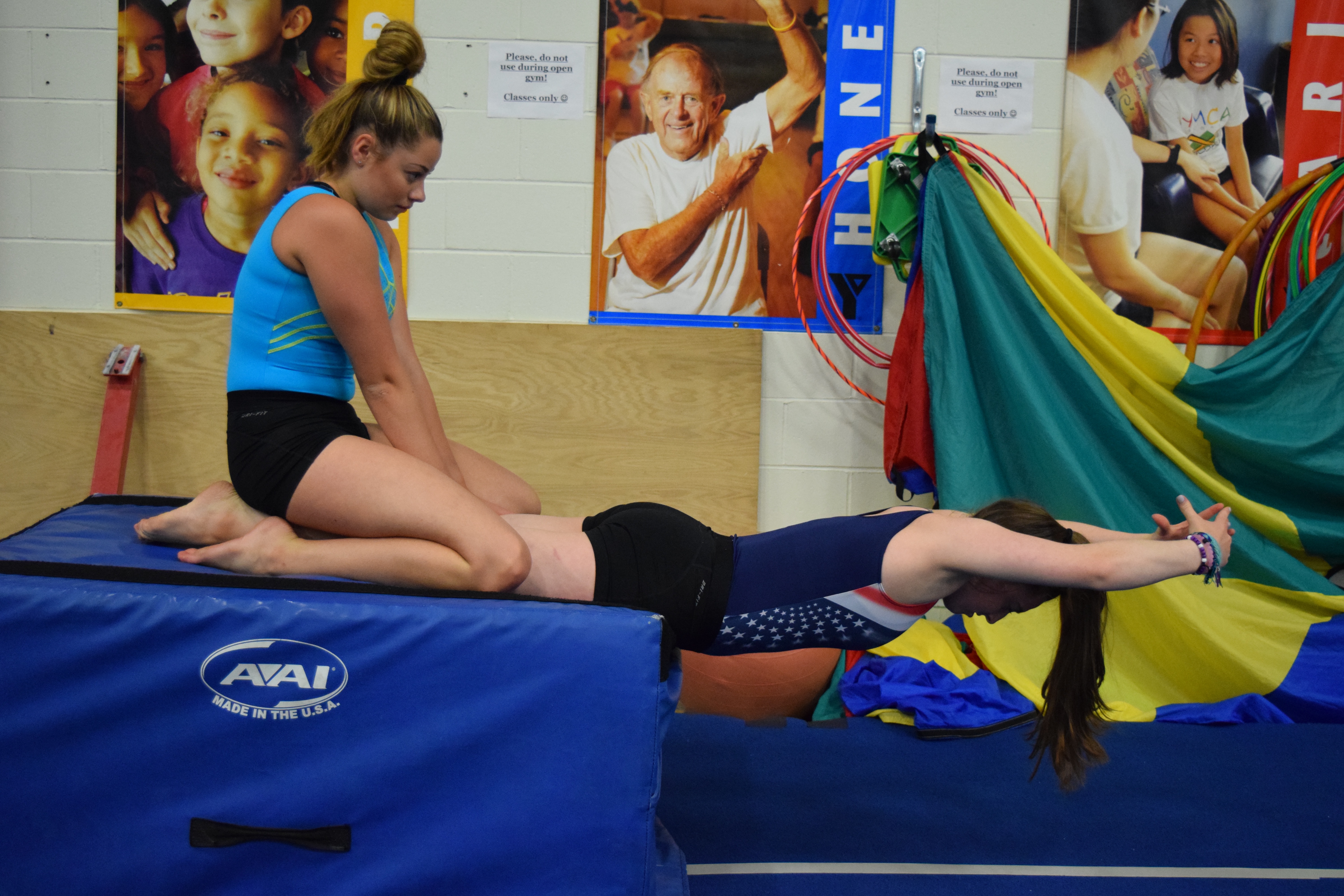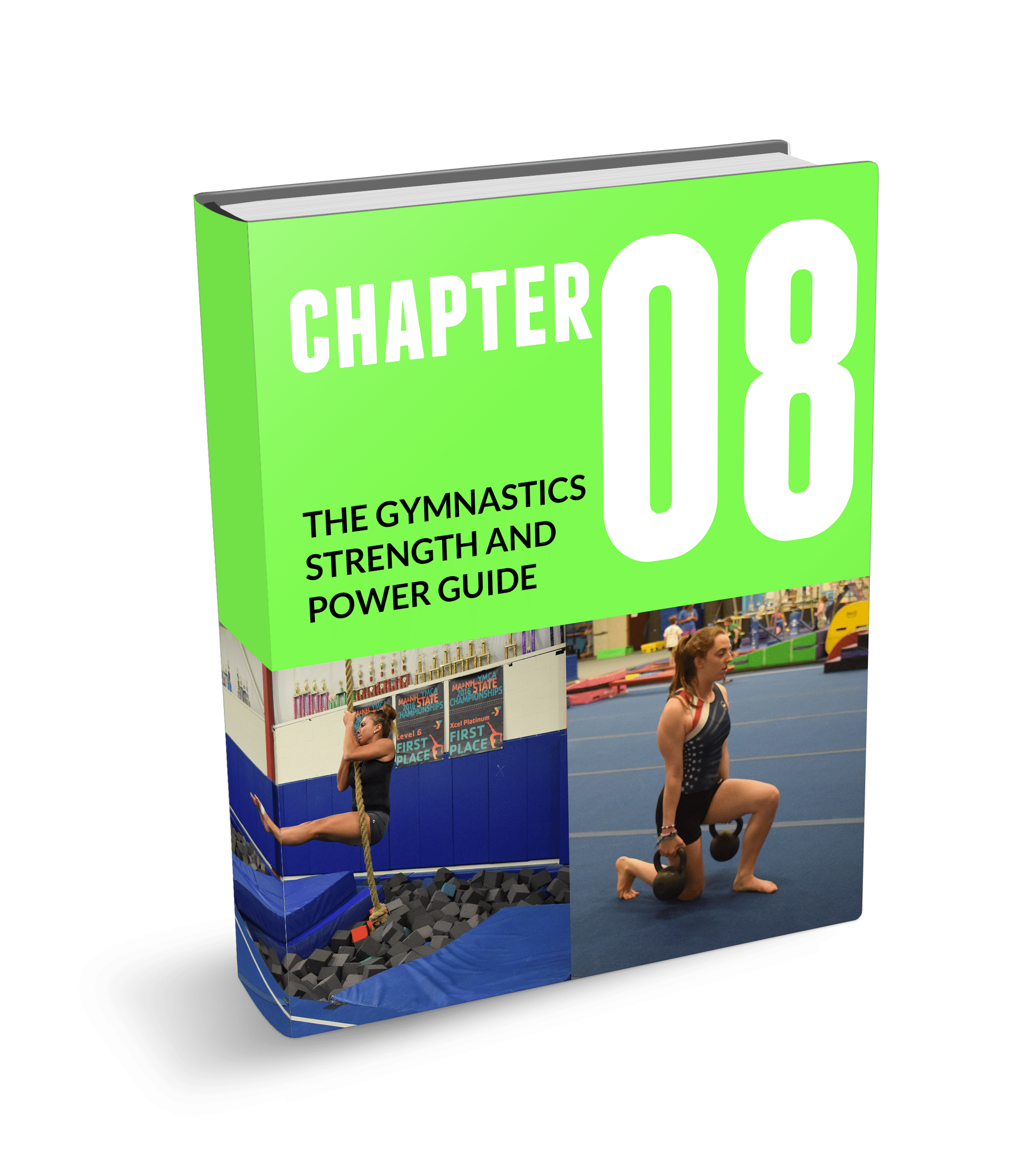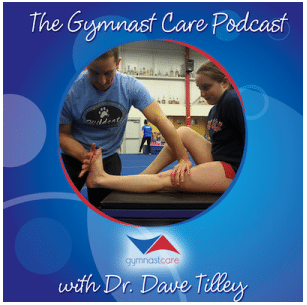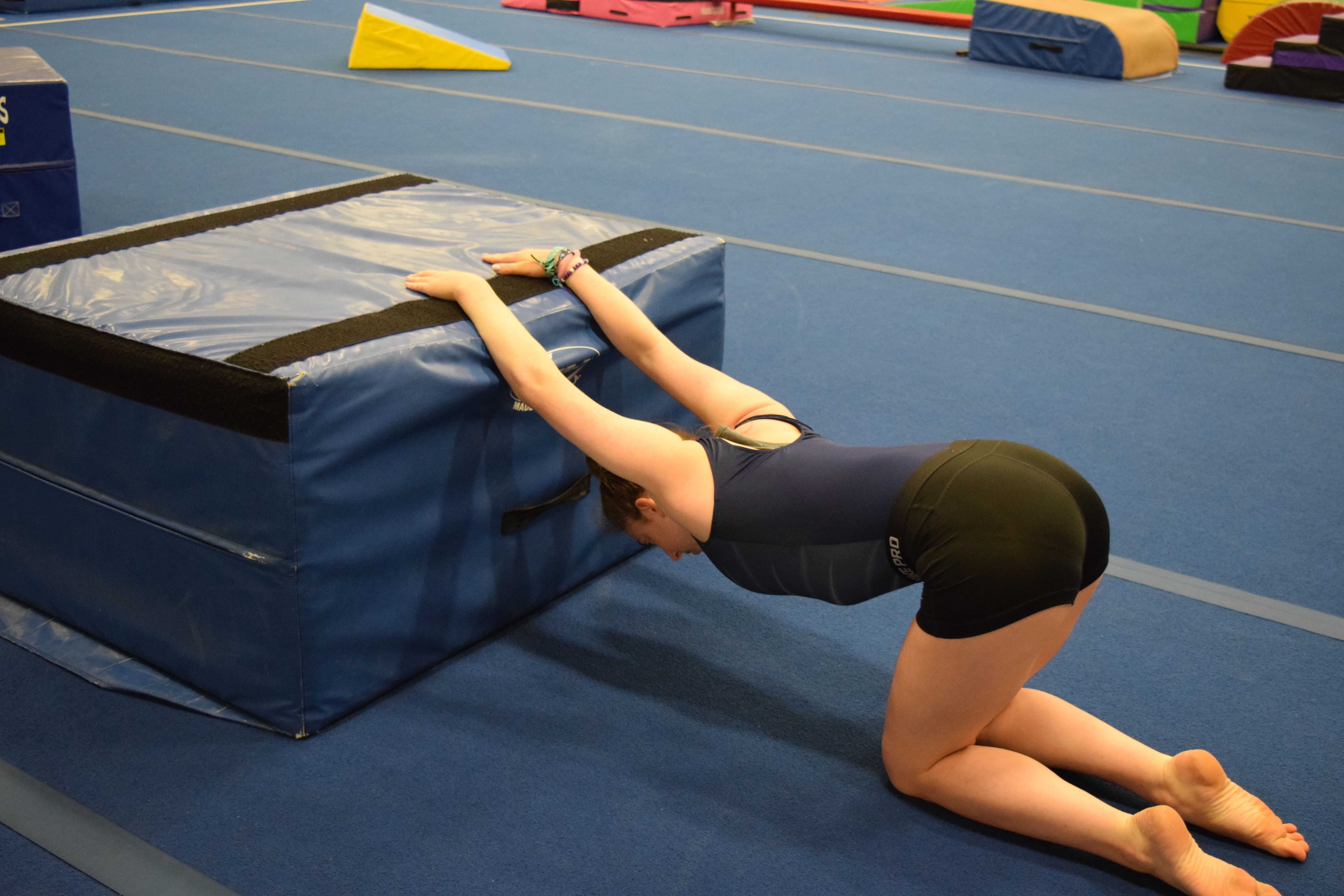Gym Quick Tips: Cue Your Gymnast’s Core with The Moving Fulcrum Conditioning Drill
As many people who follow my blog may know, I have written about my concerns with doing high volume dynamic arch up type conditioning with gymnasts. This includes lots of arch ups/superman’s, uppers, lowers, weighted arching, and so on. Although it is engrained in our gymnastics culture to work on this arching type of strength, in my mind these exercises (and other types) may not be the way to go. Support for this is
- Stuart McGill’s work from his biomechanics lab showed that a “superman” or arch up can produce greater than 1300 lbs of compression force on the spine
- A upper body hyper extension type movement (partner holding legs, gymnast arches up) can produce 1000 lbs of force.
- The majority of gymnasts with lower back pain comes from too much lower back arch in the first place. This hyper extended lower back position at rest and excessive extending with skills is what leads to over load of the spine. If too much arch is part of the problem, doesn’t it make sense that we wouldn’t want to isolate and train this arch motion more, especially with high repetition and weight?
My thoughts ride on the same wavelength for aggressive spine flexing exercises (weighted sit ups, knee hanging sit ups, etc) and aggressive spine rotation movement exercises (lying windshield wipers, Russian twists). From a lot of reading and learning more about how the core functions, I have greatly changed core conditioning program for our gymnasts.
Also, rather than just pick apart the bad things I like to offer alternative solutions for what to do instead of lots of arch ups. Yes I do believe in training arch and hollow motions because it’s key for gymnastics, and yes we do plenty of the common gymnastics core strength exercises (when it can be done with good form). However, the way we go about it is key. I think a balance of strength for the core and core stability is required. This leads me to this gym quick tip.
The Moving Fulcrum & Cueing Core Activation
One great alternative to lots of arch ups is doing more static positioning/endurance based holding. I use the variation from McGill that involves the gymnast holding statically over a block while someone holds their feet, he calls this the “moving fulcrum” exercise. Many people are already all over versions of this. However, if you stop to think about how you cue the gymnast for this exercise. When most gymnasts get told to “arch” like during this exercise or during skills, they simply contract their lower back as hard as they can to maintain the position and look up. I think this is the type of contraction and faulty technique leads to compression like from McGills work. Usually it looks something like this

You can see the drastic hyper extension in her lower back, her piked hip position, she was holding her breath to stay up, and actually when I told her to do it like this she said it was really uncomfortable on her back (was just for example, we quickly stopped). I think this can be a great exercise to replace arch ups (along with bird dogs and many others) for the core when cued and performed correctly. Here’s what I mean, rather than “arch up and hold” the cues I give are
- “Squeeze your butt before you lift your hands and start” –
- The glute muscles are key components to help rotated the pelvis back, and avoid the lower back arch. They also help to stabilize and support the pelvis, which is key with any core work
- “Pull your belly button in and brace your entire core, rather than just using your lower back”
- We want to make sure the core is functioning as one unit, using all aspects and not just the lower back muscles. This helps avoid improper technique and also trains more core function, rather than isolated anatomy or just the back extensors.
- “Take proper belly breaths feeling the ribs move wide, don’t hold your breath”
- The diaphragm and using proper breathing patterns makes up the foundation of core stability. The diaphragm has a role in breathing but also in postural stabilization. To master using it properly, the gymnast has to be able to both stabilize the position and also breathe. Many gymnasts have faulty breathing patterns using their upper chest with rib flaring, or hold their breath for false stability. More info in other posts coming down the road
- “Also think about holding in your pee”
- I know it seems ridiculous (and caution about this with younger gymnasts) but the pelvic floor is a key component to core control as it makes up the bottom of the “canister” to help stabilize the spine. It’s common for gymnasts to have issues with urination during tumbling, and the concept of properly training the core for all aspects including the pelvic floor comes into play.
- “Only move out as far as you can without cheating”
- Every gymnast has different levels of strength and abilities to organize their core. We always want quality over quantity. If the gymnast is showing huge compensations or is struggling, have them simply bring their body more in on the block, reducing the length and demand. They should be on “the edge of their ability” for a challenge but not cheating, then they can progressively go out farther as they get more in control.
By doing all of this, it creates a much better position for the drill that is training multiple aspects of the core. Here is what it looked like after we instructed these things

Although it seems like a subtle difference in position, it has huge difference in terms of training the core and also reducing overload to the lower back muscles/spine. Her lower back is much more neutral with the hips engaged, she has control over the position, she is working multiple aspects of her core, and she reported no back discomfort. Teaching extension movements like this forms the base of a good global arch. We do multiple reps at shorter bursts of 10-20 seconds versus one long hold say for a minute or 2, working on finding that position and activating the stabilizers quickly.
From here to train a more extended overall position we focus on glute control and hip extension, upper spine movement, and shoulder blade/shoulder motions on top of this solid core base that has been established. Other great alternatives are bird dog, glute and single/double leg bridging, single leg and double leg deadlifting, kettlebell work, and more.
Remember, I recently put out a completely free guide to Gymnastics Strength and Conditioning, which you can download here,

The Gymnastics Strength
and Power Guide
- Methods and exercises for increasing strength and power in gymnasts
- Explanations on why gymnasts should use both weight lifting and body weight strength
- Teaches concepts of planning, specific sets or reps, and planning for the competitive year
We take our privacy seriously and will never share your information. Click here to read our full privacy policy.
Give it a whirl, and it can be of huge benefit to build the core efficiently, spare the lower back of possible injury, and assist in gymnastics performance. This type of concept built into into all core training, training core control along with strength, using proper technique during extending skills, and continuing to be proactive about back injuries is crucial. Hope this was helpful, best of luck.
Dave
- McGill, S. Lower Back Disorders. Second Edition. Human Kinetics, 2007
- McGill, S. Ultimate Back Fitness and Performance: Fifth Edition. BackFitpro, Inc. 2014







